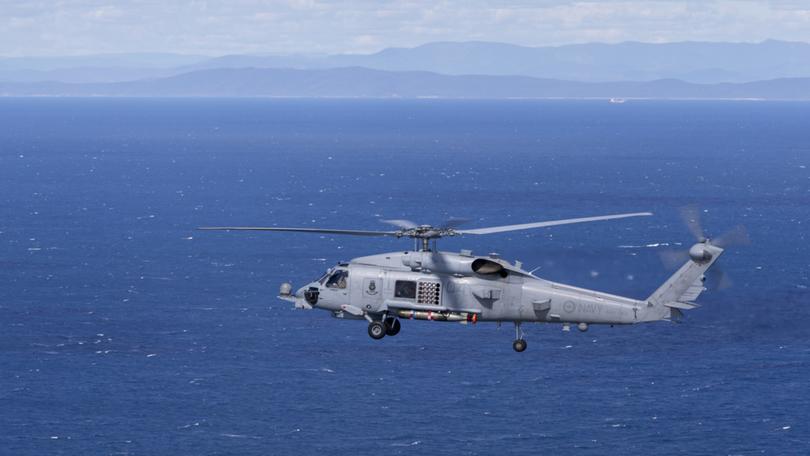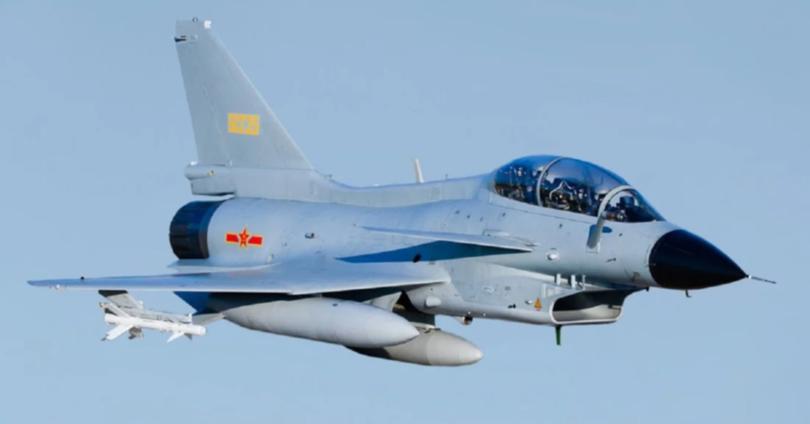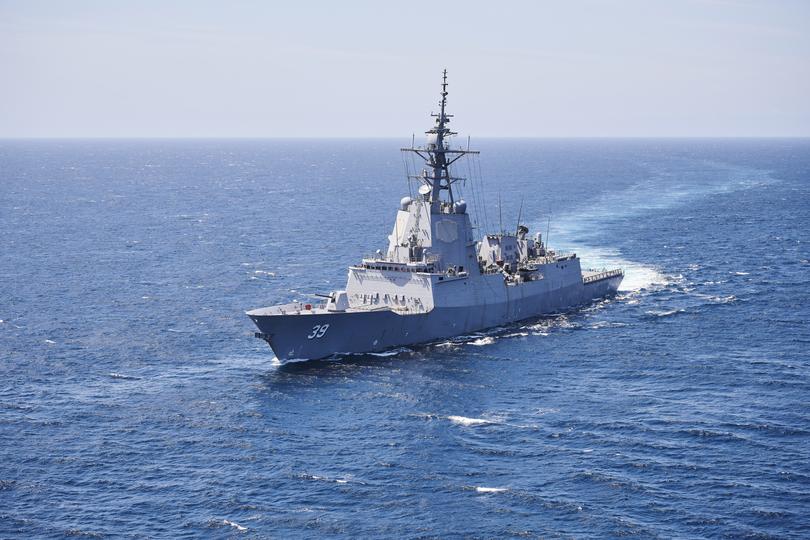Chinese fighter jet launches flares in path of Royal Australian Navy MH-60R helicopter

A Chinese fighter jet launched flares in the path of an Australian aircraft, in a move that has been condemned by the Federal Government as “unsafe and unprofessional”.
The incident occurred on Saturday in international waters in the Yellow Sea where Australia’s HMAS Hobart was taking part in Operation Argos — part of an ongoing global effort to enforce United Nations sanctions against North Korea.
A Royal Australian Navy MH-60R helicopter launched from HMAS Hobart, but was intercepted by a PLA-AF fighter aircraft that released flares along its flight path — posing a danger to the helicopter and crew onboard.
Sign up to The Nightly's newsletters.
Get the first look at the digital newspaper, curated daily stories and breaking headlines delivered to your inbox.
By continuing you agree to our Terms and Privacy Policy.No injuries occurred and there was no damage to the helicopter.

“Australia expects all countries, including China, to operate their militaries in a professional and safe manner,” the Australian Defence Force said in a statement.
“Defence has, for decades, undertaken maritime surveillance activities in the region and does so in accordance with international law, exercising the right to freedom of navigation and overflight in international waters and airspace.”
The flare deployment follows an incident in November when a Chinese warship injured Australian navy divers from HMAS Toowoomba in international waters near Japan, when the ship emitted sonar pulses.
Shadow Defence spokesman Andrew Hastie said the latest incident was “provocative and dangerous” and condemned it on behalf of the Coalition.

“This builds on the pattern of aggressive behaviour from the People’s Liberation Army – Navy towards the Australian Defence Force over the past few years, including the sonar attack on RAN divers in November last year,” Mr Hastie said.
“We are relieved that no ADF personnel were injured by this reckless, dangerous and foolish move. It does not build trust between our nations.”
Mr Hastie called on Defence Minister Richard Marles to “stand up for our ADF personnel and raise this incident directly with his Chinese counterpart”.
He also requested an “urgent briefing”.
